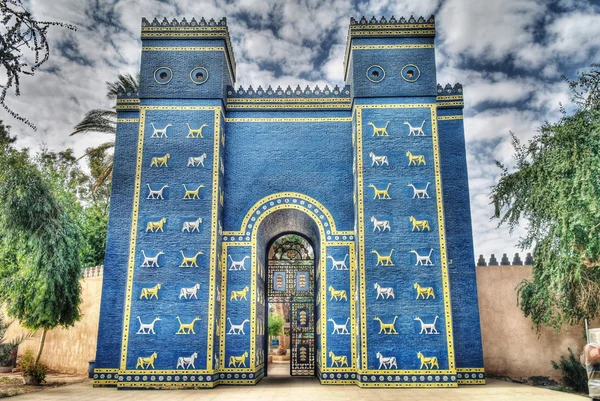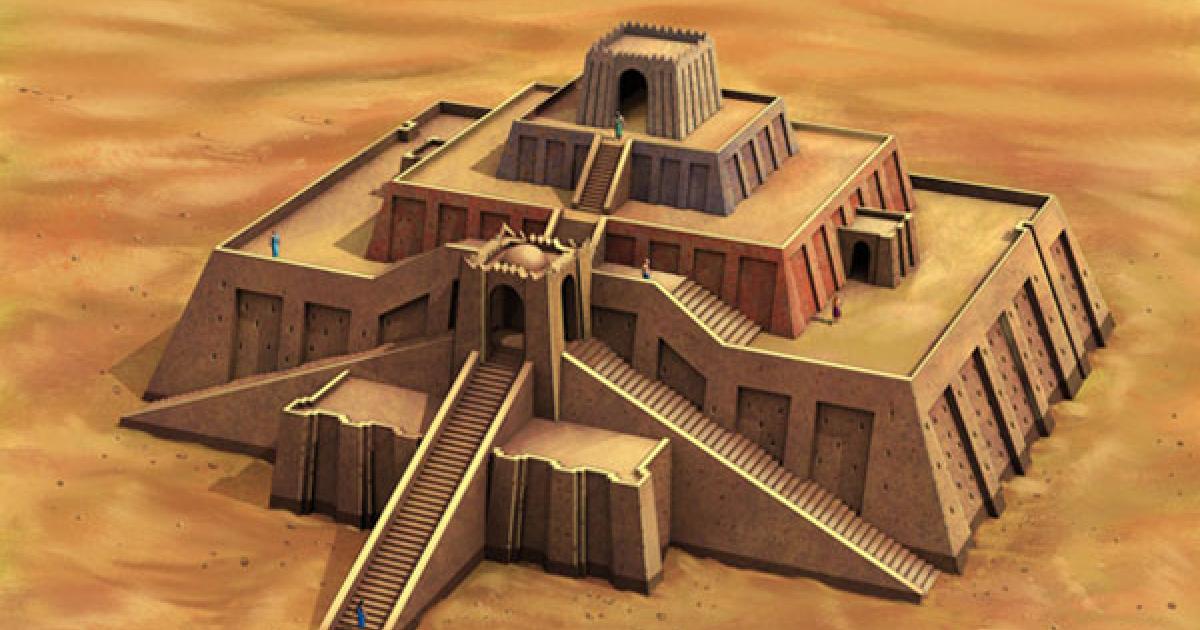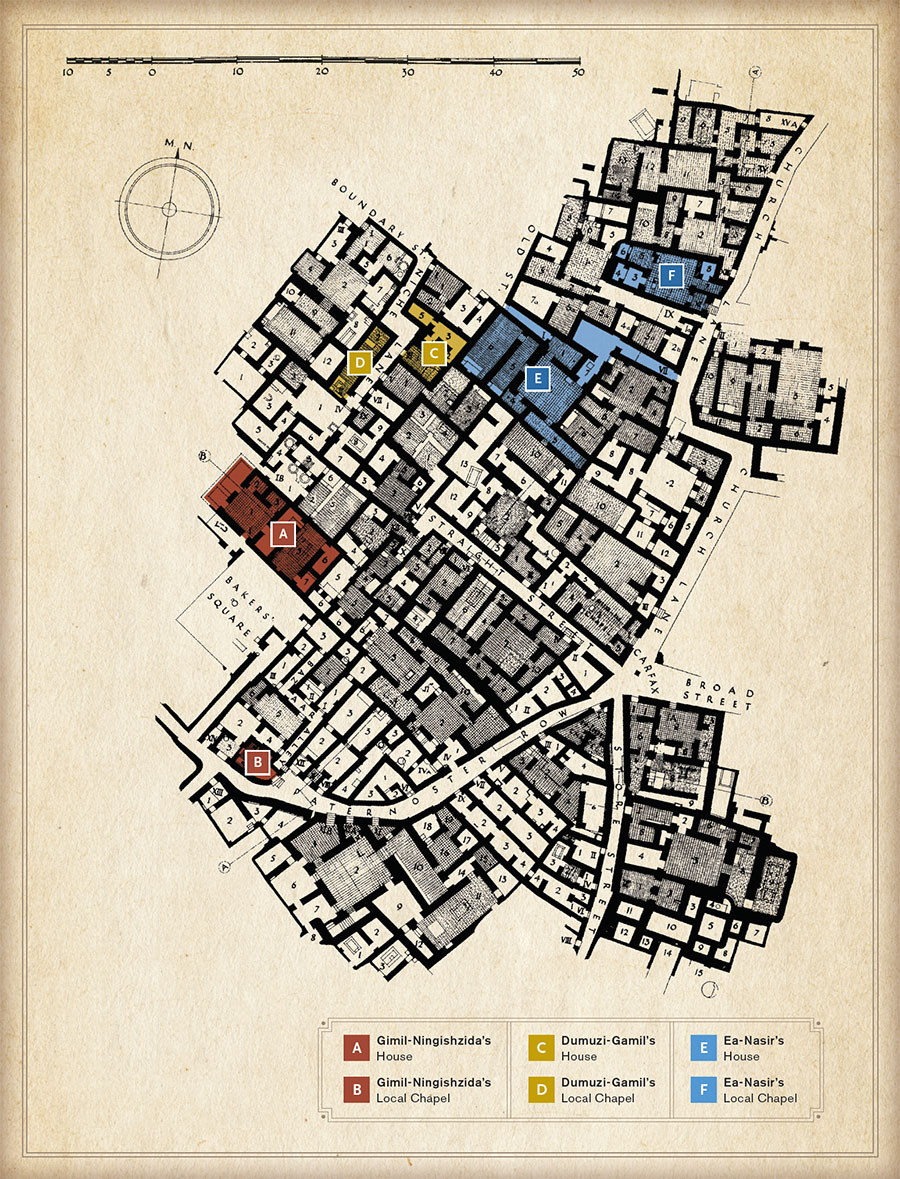Written by Diva Ariella
Humans have been in love with creating, from little games to the greatest buildings for centuries. The purpose was mainly based on what they needed to something to show off. From a temple to a mere house. Even the materials were used to show how the temple was the greatest.
Mesopotamian innovation was started by creating the wheel — although the wheel was not only invented in Babylon. Not only wheels but Mesopotamia was also known for its cuneiform in its literature. The most popular literature in the Mesopotamia era was The Epic of Gilgamesh. The Epic of Gilgamesh was a historical literature poem about the King of Uruk, Gilgamesh, and his friend, Enkidu.

Furthermore, Mesopotamia has another invention. They already know the calendar and it was known as the first 12-month calendar. Mesopotamia too was the first to be known to divide time from 1 day to 24 hours, an hour to 60 minutes, to one minute to 60 seconds.
Uruk to be known for not having any wood and stone available in the area, so they were created Terracotta (baked clay) and using it as the brick structure for their building it means they were the first to have mass brick-making and the first to create lamps and glass. They were made the brick with clay and sun-dried them. The bricks was usually flat on the bottom and curved on the top, often called plano-convex mud bricks.
The Mesopotamians was using the mud-brick more often because of how easy they could found the material and the durability of its structure. The brick itself was made with clay, water and other materials and be dried in the sun. The brick then were held together by mud mortar and then the walls were became thick and solid, even it was a great thing in the Mesopotamia era for providing them insulation against the harsh climate.

The Mesopotamia has evidence that their invention was the earliest, around 5.500 years ago. The wheels were used as a potter’s wheels and was made by solid wooden with a hole in the center. Later, in 3500-3300 BCE, the Mesopotamian people were using the wheels as their transportation and attached it to their carts to transport people and goods. The innovation was the revolution of the growth of civilizations.

Now, the Mesopotamian era had a lot of buildings made of jewels and rare stones to show how great the king was. We could see what the Gate of Ishtar was made of. It used over 20.000 clay bricks as the walls, and then it glazed with lapis lazuli to gold with its own story. The gate itself was decorated with over 120 sculptures of lions, flowers, and enamel yellow tiles. The path itself was paved by red and yellow stones that have an inscription of King Nebuchadnezzar. The people believed that the gates represented dragons, bulls, and lions, which means the dragon represented Marduk, the patron god of the city. The bulls represent Adad, and the Lion represents Ishtar.

Ishtar Gate was purposedly to protect the city of Babylon with the decoration representing the gods and goddesses of the Babylonian people. The lions that were associated with Ishtar have a role as a goddess of love, war, and fertility. Bulls that were associated with Adad were the god of weather, and dragons that were associated with Marduk were the patron deity of Babylon.

The gate itself was meant to display the power and wealth of the Babylonian Empire or to be a ritual as a procession for kings from the city to the temple. The Ishtar Gate was originally built by King Nebuchadnezzar II in the 6th century BCE and is considered one of the Wonders of the World.
Not only the gate, Uruk has a Ziggurat. In ancient Mesopotamia, the ziggurat was a temple tower built with a pyramidal structure, with stages outside staircases and a shrine at the top of the temple. The ziggurat itself has a great means as the temple on the top of the building is closer to the heavens and has access from the ground. It was built with mud-brick construction, and the structure rose to the top with each stage smaller than the below, creating a stepped platform. Babylonian people believed that the ziggurat was a pyramid temple that connected heaven and earth. The higher platform was a place where the Mesopotamian people worshiped their god as it was called Etemenanki which means “the House of the foundation of Heaven and Earth”.

The ziggurat itself was a place where Sumerians and Akkadian people did their religious practice as the purpose was built for worship, dedicated to the moon god, Nana. It was known that the place provided a comprehensive understanding of the governance with the guide of the religion. The Ziggurat also yielded economic aspects, political, and military, which means the governor or the king at that time lived there as the guide of the Mesopotamian people.
We could know who has taken their part as the one who built the Ziggurat by the foundation cylinder and the royal stamp on the clay even when they were built the Ziggurat they were re-used some part of the walls. Some knows that the lowest stage were built by Ur-Engur and the above it was by Nabonidus even when we now couldn’t see what the upper part of the Ziggurat.
The Ziggurat was made of mud brick and covered by baked bricks. With no internal chambers and usually the temple is usually square or rectangular. But even so, the Ziggurat was beautifully decorated by the tree or shrubs, known as The Hanging Gardens of Babylon. King Nebuchadnezzar created it for his beloved wife. At that time, Queen Amytis missed her homeland, which has green hills and valleys. But the Hanging Garden of Babylon was associated with Queen Semiramis, and it is also known as the Hanging Gardens of Semiramis as its alternative name.

The Hanging Garden of Babylon itself is a great invention. The question is, how can the trees bloom so beautifully? How can Babylonian people water it? The answer is that The Hanging Garden of Babylon has a great irrigation system. The water could be transferred from below the Ziggurat to the top of the Ziggurat. The creator built an irrigation system with chained pumps that take water from the Euphrates River. Still, some speculated that the water was transferred because the terrace of the Ziggurat was spiral-shaped, so it was easy to transfer water from the highest terrace.
Despite the name being “Hanging Garden,” it was not actually a hanging garden. The garden was built on a terrace. In reality, the garden itself became a symbol of prosperity and power for Babylonian people at that time. Truthfully, the garden’s existence couldn’t be found where exactly they were. Some speculated that the garden was near the capital of the Assyrian Empire and others say that the garden was just only Greek imagination.
Hammurabi, the King of Babylon, ordered the Babylonian people to rebuild Babylon. He asks to reconstruct the temples, city walls, public spaces, and even the canals. The Babylon urban was known for its large and wide streets, intersected at the right angle and paved with bitumen and bricks.

As we can see, the area of Ur consists of 50 buildings at once, has five neighborhoods, and is centered around the local temple. The maps show who lived in the neighborhood and that they have certain names on their houses to tell who lived there and the temple in the area.
The house itself has a courtyard type of house that was popular in that era. The residence was designed centered around an open courtyard, providing light and ventilation. The room of the house was open to the courtyard and create a private and secure living environment. The exterior of the house often had no windows to create thing more inward focus. The courtyard type of house is suitable for Mesopotamia because it was in hot and arid area. The courtyard could give a cooling effect to the convection currents and this concept has spread to influence other cities with similar climates in Middle East and North Africa.
Some of their courtyard houses were multi-story, with rooms built on top of each other around the courtyard. The ciurtyard itself has multiple purposes to be a living space, ventilation, water collection and even a religious significance with altars and even shrines placed within it.

Conclution
Mesopotamia left a indelible mark on human history as the cradle of civilization. The Architectural marvels, innovative technologies on its era, and their cultural heritage continue to inspire and intrigue lots of people. The Mesopotamians were the pioneers in lots of the fields, they were invented the wheel, a fundamental in revolution for transportation and trade. Their Cuneiform writing system and their timekeeping system now was still be used by a lot of us today.
As it was written here, we know the Mesopotamians was a great builders for making a brick-mud and could transform it into a magnificent temples, city walls, or even their residence. They purposedly using the material near them and create the mud-brick under the sun and create a durable also functional structures even that withstood the test of time.
The most iconic architectural achievement of The Mesopotamians is their Ziggurat. It was the massive stepped pyramid temple and the structure was believed to connect them to heaven and earth, serve as a sacred place to worships. Their Hanging Garden of Babylon was the another wonder of the ancient time, a testament to the Mesopotamian ingenuity in their irrigation and horticulture.
They also excel their urban planning design by how well organized their cities with intricate networks of streets and canals. Their knowledge of hydraulic engineering allow them to control the flow of water, irrigate their fields and manage the flood risks.
Their greatness extend far beyond its architectural and the technologies achievements. They has The Epic of Gilgamesh, the one of the world’s oldest literature. The contents was offer profound insight of the human condition, explore love, loss, and mortality. The Mesopotamians has Hammurabi too as their king who has influence the legal system throughout the history and their urban cities with his emphasis on justice and retributions.
Mesopotamia contribution to the civilization are immeasurable from its inventions, innovations, and cultural expression that have shaped the human history. By studying the ancient time of Mesopotamia, we could gain deeper meaning and understanding of our own origins and could appreciate the remark of achievement of our ancestors.
Source
Woolley, C. Leonard. “The Ziggurat of Ur.” The Museum Journal XV, no. 2 (June, 1924): 107-114. Accessed November 29, 2024. https://www.penn.museum/sites/journal/1235/
Hafford, William B.. “Mesopotamian City Life.” Expedition Magazine 60, no. 1 (May, 2018): -. Accessed November 29, 2024. https://www.penn.museum/sites/expedition/mesopotamian-city-life/
Lloyd, S. H.F. (2019, October 30). Mesopotamian art and architecture. Encyclopedia Britannica. https://www.britannica.com/art/Mesopotamian-art
Jacobsen, T. (2024, November 26). Mesopotamian religion. Encyclopedia Britannica. https://www.britannica.com/topic/Mesopotamian-religion